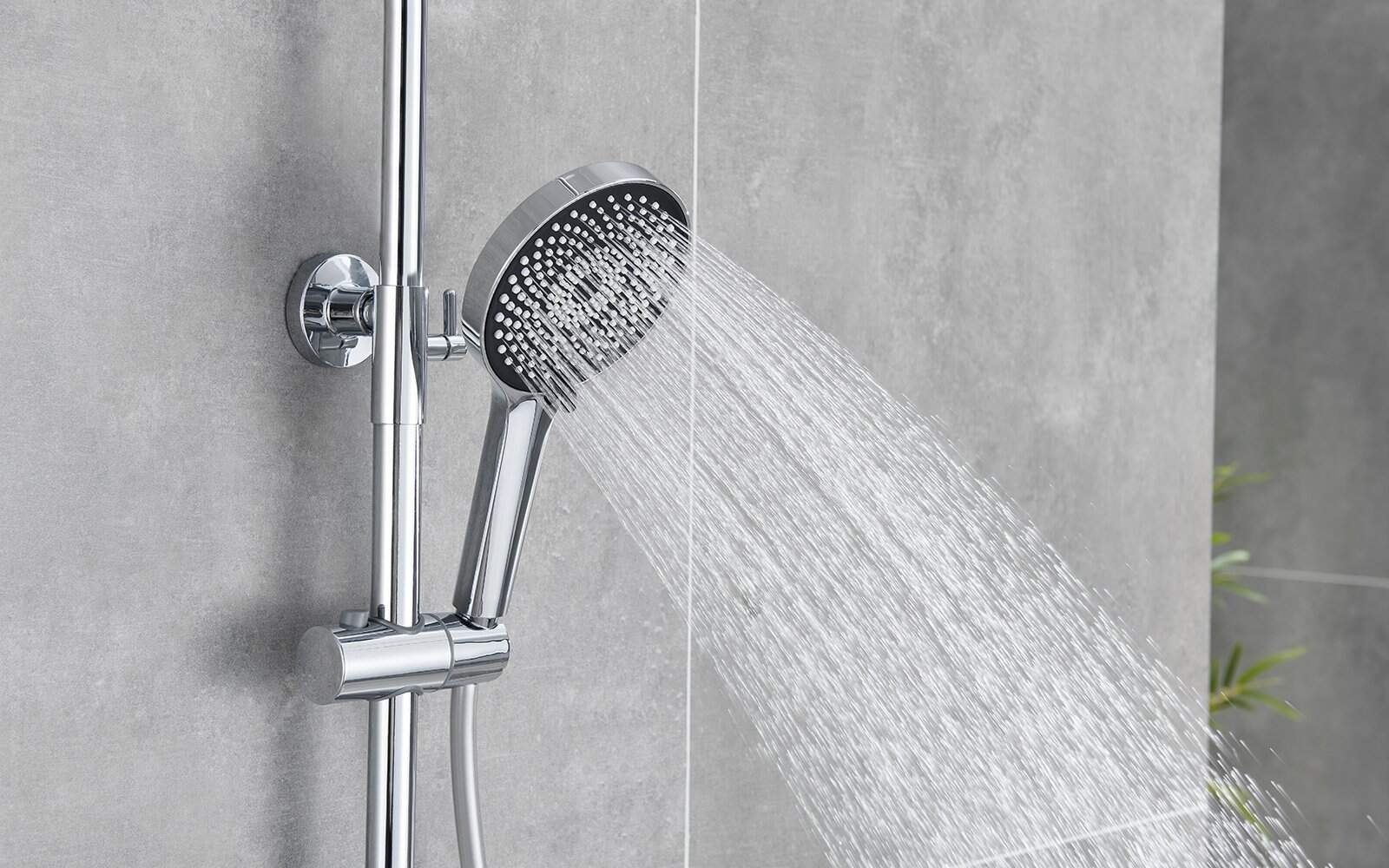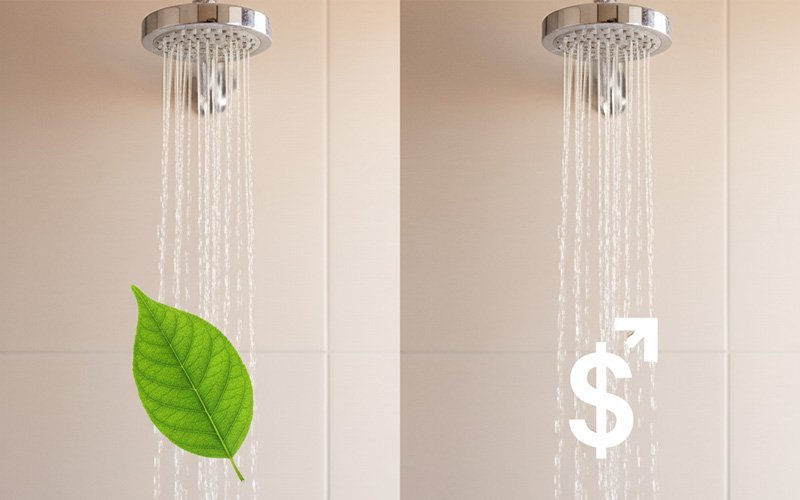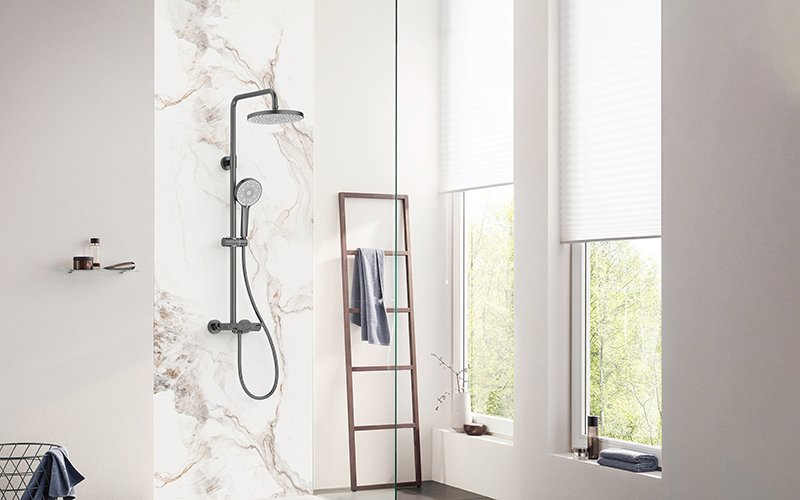Table of Content

DIY Cleaning Disclaimer:
This guide is for general informational purposes only. The cleaning methods and solutions mentioned, including the use of household chemicals or commercial products, are suggestions. Always test any cleaning agent on a small, inconspicuous area first to ensure it does not damage your fixture’s finish. Follow all product labels and safety precautions. These steps are to be followed at **your own risk**. We assume no liability for any damage resulting from the use of this guide.
A clogged showerhead disrupts water pressure and spray patterns, turning a relaxing shower into a frustrating experience. Fortunately, you can restore its performance with the right techniques and a little effort.
This guide walks you through the causes of clogs, effective cleaning methods tailored to different situations, material-specific tips, and proactive prevention strategies. By the end, you’ll understand how to tackle this common bathroom issue and help maintain your showerhead’s performance.
Signs of a Clogged Showerhead
A clogged showerhead can disrupt water flow and affect your shower experience. Below are common signs to help you determine if your showerhead is clogged:
- Reduced Water Flow
If you notice significantly lower water pressure during your shower, with weak or insufficient flow to rinse properly, this is a likely sign of a clog. Typically, mineral deposits or debris block the nozzles, causing this issue. - Uneven Spray Pattern
When some nozzles fail to release water or produce only a weak stream, the spray pattern becomes inconsistent, with certain areas having no flow at all. This indicates that specific nozzles are clogged. - Altered Spray Direction
If the water no longer sprays evenly but instead veers to one side or shoots at an unusual angle (e.g., hitting the wall instead of flowing downward), a clog may have altered the water’s path. - Dripping or Leaking After Use
If the showerhead continues to drip or leak water after the water source is turned off, it could mean trapped water cannot drain properly, often due to a clog. - Visible Deposits on the Showerhead
Inspect the showerhead surface. If you see white (mineral deposits), green (copper corrosion), or black (mold) stains around the nozzles, these are clear indicators that a clog is forming.

Why Showerheads Get Clogged
Clogs form when debris builds up inside the showerhead’s nozzles. Several culprits contribute to this problem:
- Mineral Deposits: Hard water contains calcium and magnesium, which leave behind white, crusty buildup over time.
- Mold and Bacteria: The warm, damp environment of a shower encourages microbial growth, leading to slimy or discolored blockages.
- Dirt and Debris: Tiny particles from water pipes can accumulate, especially in older homes.
Understanding these causes helps you choose the best cleaning approach and prevent future clogs.
Cleaning Methods for Every Situation
The right cleaning method depends on the severity of the clog and whether you can remove the showerhead. Here are three proven techniques, starting with the simplest.
Method 1: Clean It in Place (For Mild Clogs)
If you notice reduced water flow but the clog isn’t severe, try this easy method that doesn’t require disassembly.
- What You’ll Need:
- White vinegar
- A plastic zip-lock bag
- A rubber band
- An old toothbrush
- Steps:
- Pour enough white vinegar into the zip-lock bag to submerge the showerhead.
- Place the bag over the showerhead, ensuring the nozzles are fully immersed.
- Secure the bag with a rubber band.
- Let it soak for 12 to 24 hours to dissolve mineral deposits.
- Remove the bag and scrub the nozzles with the toothbrush to dislodge remaining debris.
- Turn on the hot water for a minute to flush out loosened particles.
- Caution:
Vinegar is acidic and can damage certain finishes, such as bronze, brass, or specialty coatings. Always check your manufacturer’s cleaning recommendations first. If unsure, limit the soaking time to under 30 minutes or opt for a milder cleaning solution.
Method 2: Deep Clean After Removal (For Moderate to Severe Clogs)
For stubborn clogs, removing the showerhead allows a more thorough cleaning.
- What You’ll Need:
-
- White vinegar
- Baking soda
- An old toothbrush
- A toothpick or safety pin
- Steps:
- Unscrew the showerhead from the pipe (consult the manufacturer’s manual if unsure how to detach it).
- Mix equal parts white vinegar and baking soda (e.g., 1 cup of each) in a bowl to create a fizzy cleaning solution.
- Submerge the showerhead in the mixture and soak for 1 to 2 hours.
- Scrub the nozzles with the toothbrush, then use a toothpick or safety pin to clear individual holes.
- Rinse thoroughly with water and reattach the showerhead.
- Caution:
Confirm your showerhead’s material can handle vinegar and baking soda. This method suits detachable metal or plastic models but may not work for fixed units.
Method 3: Use a Commercial Descaler (For Extreme Clogs)
When natural solutions fall short, a commercial descaling product may be used for tougher blockages.
- What You’ll Need:
-
- A commercial descaling product suitable for your faucet’s material
- Rubber gloves
- A small brush
- Steps:
- Wear gloves to protect your hands from the chemical.
- Apply the descaler directly to the showerhead, following the product’s instructions.
- Let it sit for 30 minutes to break down deposits.
- Scrub the nozzles with the brush.
- Rinse thoroughly with water to remove all residue.
- Caution:
Check the descaler’s compatibility with your showerhead’s material, as strong chemicals can corrode certain finishes.

Material-Specific Cleaning Tips
Showerheads come in various materials, and each reacts differently to cleaning agents. Follow these guidelines to avoid damage:
- Chrome: Vinegar and baking soda work well, but avoid soaking for more than 24 hours to prevent surface dulling.
- Brass or Bronze: Skip vinegar—it corrodes these metals. Opt for a mild soap solution or a brass-specific cleaner instead.
- Plastic: Vinegar and baking soda are safe, but don’t use hot water during rinsing, as heat can warp plastic.
- Silicone: Vinegar cleans effectively, but scrub gently to preserve the flexible nozzles.
Not sure what your showerhead is made of? Check the packaging or manufacturer’s website for details.
How to Prevent Future Clogs
Cleaning fixes the problem, but prevention keeps it from coming back. Adopt these habits:
- Clean Monthly: Wipe down the showerhead and soak it briefly in vinegar to stop buildup before it worsens.
- Install a Water Softener: If you have hard water, a water softener can reduce mineral content throughout your home’s plumbing.
- Add a Showerhead Filter: Filters trap debris before it reaches the nozzles.
- Ventilate the Bathroom: Run a fan or open a window after showering to limit mold and bacteria growth.
Final Thoughts
A clogged showerhead doesn’t have to ruin your day. Choose the cleaning method that matches your clog’s severity, respect your showerhead’s material, and take steps to prevent future issues. With these tools and techniques, you can help maintain consistent water pressure and an enjoyable shower.
FAQs
Related Posts








